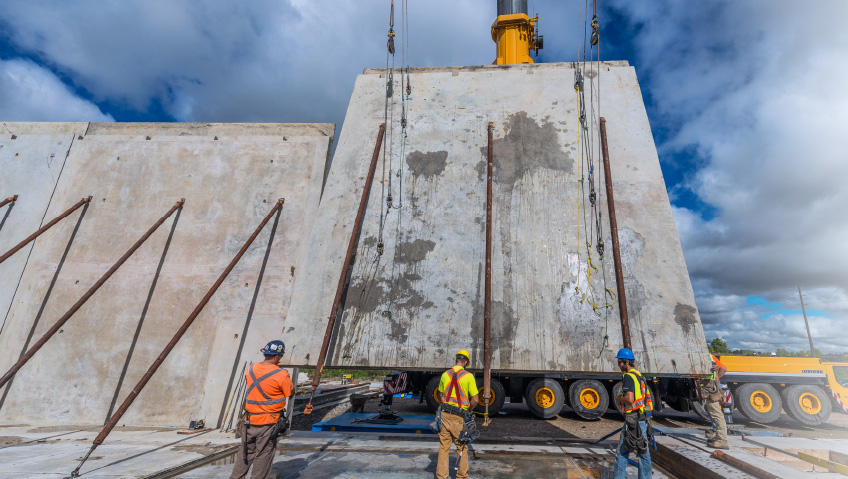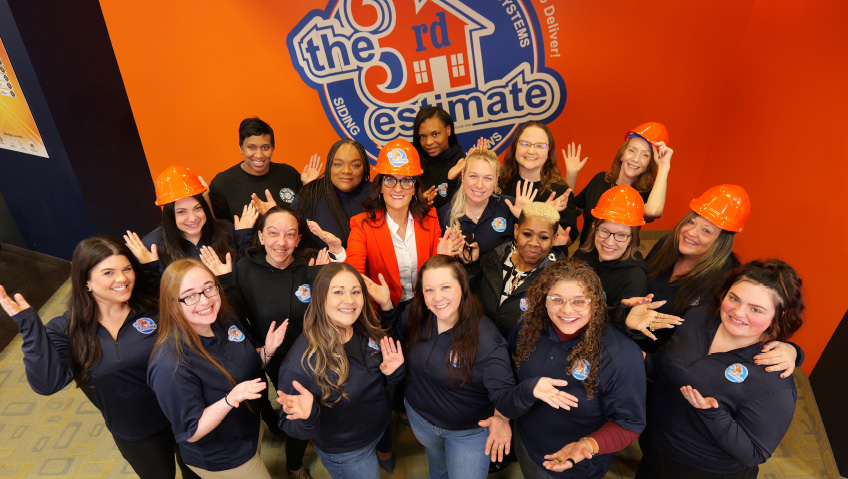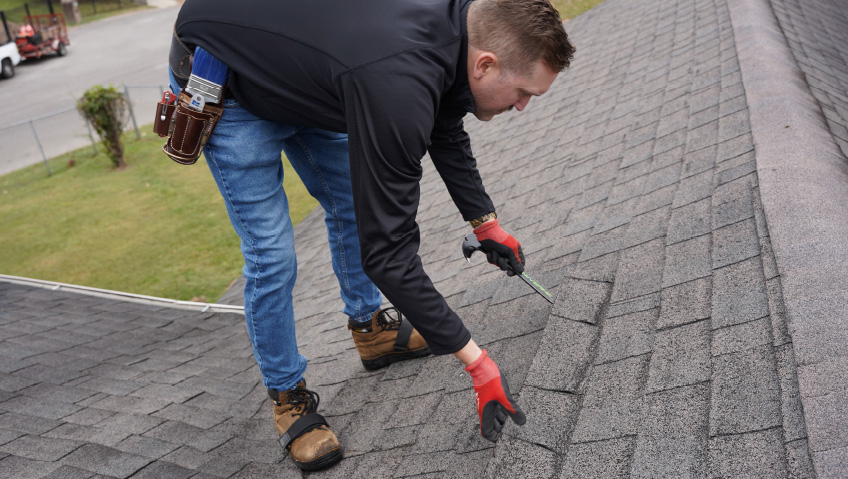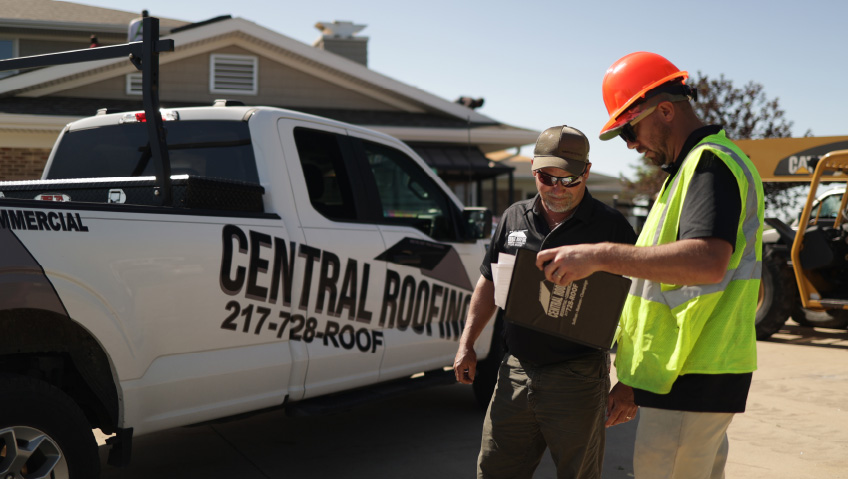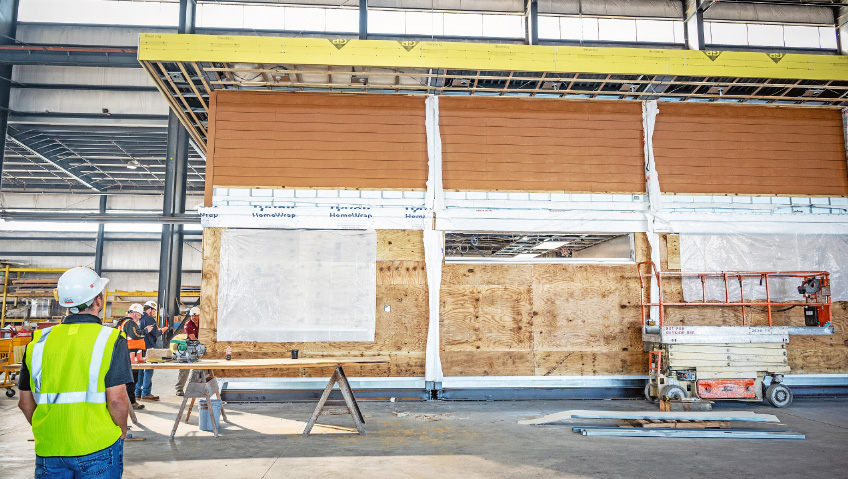Multi-disciplinary design firm DES of Redwood City, California, marked its 50th anniversary this year, an achievement made possible by having a sterling body of work, a progressive spirit, and a client-centric focus. The company’s origins can be traced to an effort to please a customer who was employing separate firms for a project.
“One of our clients said, ‘I’m tired of driving from the designer’s office to the engineer’s office. Would you two guys just get together and combine your firm?’ In essence, that’s how [the company] was born, and I think that has kind of shaped who we’ve been since: keep it multi-discipline; keep it simple; keep it easy for the client,” explains Chief Executive Officer, Steve Mincey.
The engineer in this anecdote was Don Mincey, father of the current CEO. In 1973, Don Mincey joined forces with designer Jim Wetzel to launch the firm, originally called Design and Engineering Systems. This moniker would be tweaked to DES Architects + Engineers, and then, in May of this year, as part of a company rebranding, a new name was adopted: DES. (pronounced “D-E-S”).
One thing that has not changed is the company’s commitment to creativity, collaboration, and sustainability. It has clearly been a winning formula as business is booming, and DES is opening a new office in Texas while garnering prestigious awards for high-profile projects.
Architecture, interior design, civil and structural engineering, landscape architecture, visual communications, and sustainability, are the firm’s main services, with architecture being “the mainstay,” according to Mincey. “A client can hire us for one particular discipline but, in general, I think they find the real power of hiring us comes from the integrated services we offer,” he explains.
“Any one project may have all of our disciplines, or it may only have one of our disciplines,” adds San Francisco Managing Principal, Kevin Norman.
DES is capable of providing its services within a design-build format, an arrangement in which the designer and contractor work together under a single contract for the project owner. The company performs many projects for clients in the technology sector, which is understandable given the company is based in Silicon Valley. The Valley is also home to a thriving life sciences scene, which accounts for a growing part of DES’ work. The company has clients in education, health care, and mixed-used markets as well.
“We keep harking back to the fact that we’ve grown up with Silicon Valley [and its] entrepreneurial spirit. As things change, we’ve really been able to adapt and change along with them,” states Mincey.
Being based in the Valley has proven advantageous in other areas as well. “Technology-wise, we’re very savvy,” says San Francisco Managing Principal, Kirsten Fordyce-Wheeler. “The tools we use to deliver projects are very, very current and maybe a little bit ahead of other regions in the U.S.”
These tools include augmented reality (AR), virtual reality (VR), and three-dimensional (3D) computer modeling software. For a recent project, the company developed a virtual floor plan of a two-story project, complete with window views using imagery gleaned from a drone. By donning Virtual Reality goggles or viewing a computer screen, the client could walk around the proposed building site and visualize what the completed structure would look like.
About two years ago, DES launched a specialty company called LightFiction that provides cutting-edge visual solutions to other architects and interested parties. In addition to AR, VR, and 3D modeling, LightFiction’s services include computer-generated imagery (CGI), visual effects, marketing films and websites, app development, and renderings.
Fordyce-Wheeler points out another reason for the company’s success. “I also think there’s a nimbleness to our approach to projects, given that we are multi-disciplinary,” she states. “We’re not siloed; we mix it up. Even though I might have an interiors project, I have access to structural; I have access to landscape. Also, there is a flattened structure. Our younger designers and architects and engineers have access to senior management.”
DES is also good at “growing with our clients,” she adds. “As our clients grow and change and morph, we grow with them.”
She cites projects the firm has completed with flourishing precision diagnostics firm BillionToOne. DES has been working with BillionToOne since its early days as a startup in Menlo Park Labs – Tarlton, a life sciences campus. In 2021, DES completed a 36,000-square-foot workspace enhancement project for BillionToOne that involved interior design, architecture, structural engineering, and landscape architecture work. DES designed an open, adaptable laboratory space and transformed a break room into a “versatile communal hub” for larger meetings or multi-functional work.
A project called The Cove is another point of pride for DES. Working with a client called Healthpeak, DES created a new life science campus in a vacant former industrial site in South San Francisco. This 884,000-square-foot project involved architectural design, landscape architecture, interior design, structural engineering, sustainability, and visual communication services. The project earned kudos, including the San Francisco Business Times’ ‘Best R&D/Lab Space; and NAIOP ‘Best of the Bay – Office Development of the Year’ awards. NAIOP is a North America-wide commercial real estate trade association. The Cove project was finished in 2020.
A year prior, DES completed a two-lobby project for Jay Paul Company, a long-term client. The team was entrusted with designing ground-floor and seventh-floor lobbies for a mixed-use skyscraper in San Francisco. This LEED Platinum project won the American Institute of Architects (AIA) ‘San Mateo County People’s Choice Award, 2020’ and the AIA ‘San Mateo County Citation Award for Interior Architecture, 2020’.
The company also excels at conversions, transforming a former lamp store into a clinic for a health care client, for example. Conversions are becoming particularly important given the high vacancy rate in the Bay Area. This is caused by a variety of factors, including the shift to online shopping, COVID lockdowns, and rising real estate costs.
While COVID had a devastating impact on many businesses, DES was well-positioned to cope with the pandemic. Being based in earthquake-prone California, the company had long ago equipped most employees with a laptop and established a system that enabled remote work. This was part of a plan to keep the office functioning should a major earthquake—like the one that hit the state in 1989—destroy bridges and highways, making it impossible to commute to work.
“We lucked out in that people just went home and continued working hard and being productive. We fared well through that period,” states Mincey.
That said, the company also quickly realized how much its workforce “value social connection and interaction,” and a vibrant office life, says Fordyce-Wheeler. With 120 employees, the company prides itself on having a collegial, caring culture, with plenty of social activities and events. Cultural diversity and individual curiosity are strongly valued.
To this end, the firm prefers to hire new staff members “who are willing to learn new things, take on new challenges. The Silicon Valley area is not static; buildings are constantly changing. There’s a new challenge, it seems, on every project, and you have to have that spirit to embrace that and learn something new,” says Mincey.
Clearly, the workforce appreciates these attitudes as the company has many long-term employees who have been here for “20 to 30 years,” says Fordyce-Wheeler.
The company is also on the move, with a new office opening in Austin, Texas, a city with “the same entrepreneurial spirit” as Silicon Valley, Norman notes.
Moving forward, sustainability is likely to grow further in importance for the firm. Here, sustainability means more than just using recycled materials during construction or installing energy-efficient lighting. “It’s about approaching buildings in a different way,” says Mincey. “We see buildings as living, breathing things as opposed to just traditional brick and mortar. It’s this idea that they have to adapt to weather; they have to adapt to flexibility and change over time as they are used.”
This approach stands in contrast to old-school attitudes, in which designers created buildings for a single purpose and a definitive life cycle.
There are currently no plans to move into any new markets, although if an opportunity arose, the company might consider it. “I think we’ll continue in the sectors we’re in. We have tech; life sciences we’re very strong in; health care is a sector we’re good in and growing. Education—we’d like to continue to grow in that,” shares Norman.
While content to build its presence in existing markets, DES would, however, like to share its style and culture with other locations. “When we talk about branching out, we ask, ‘How do we export this sense of creative design and developing interesting solutions to complex projects? How do we take that to other geographic regions?’” says Mincey. “We’re dipping our toe into expansion with Austin and I think there are other areas we could export to.”


